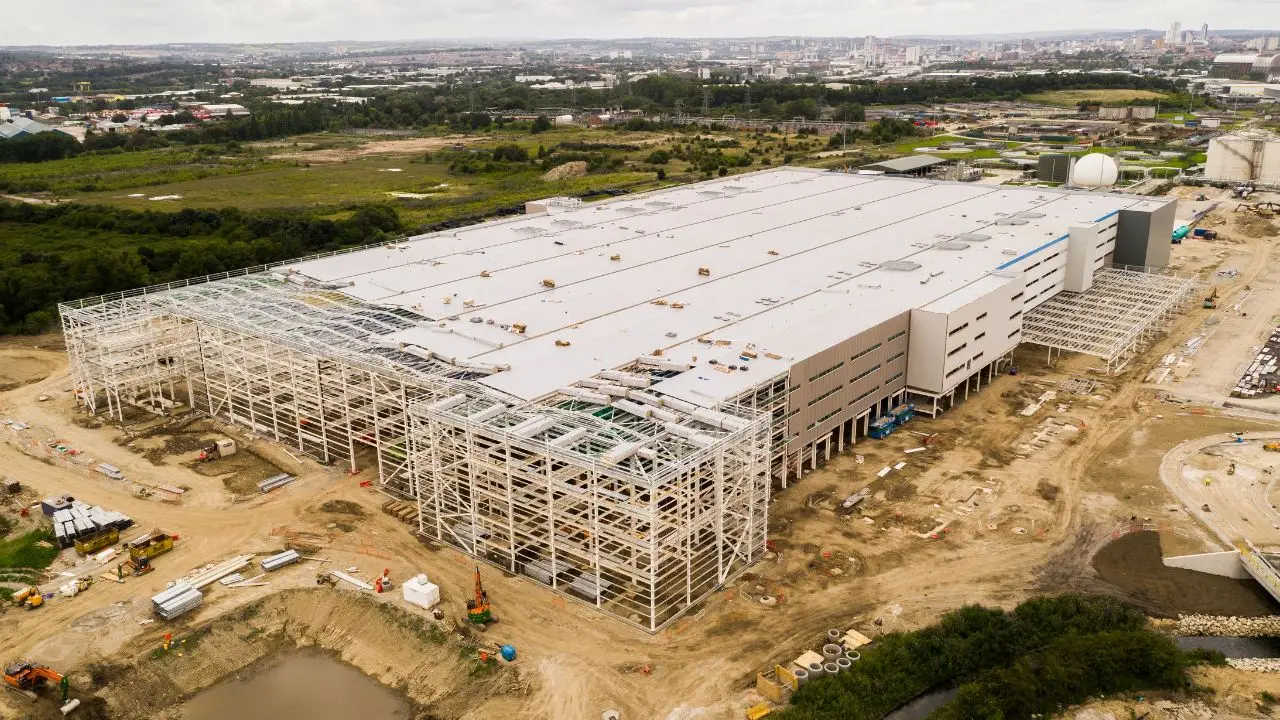The Role of CapEx Projects and Teams in Life Sciences Innovation
16 Apr, 202515 minutesCapital expenditure (CapEx) projects are significant in sustaining the growth and innovation...

Capital expenditure (CapEx) projects are significant in sustaining the growth and innovation of the global life science industry. These projects drive advancements in infrastructure and technologies that allow organisations to meet regulatory demands and stay competitive in increasingly complex markets. Behind every successful CapEx project is a skilled and specialised team of experts whose work directly contributes to developing groundbreaking solutions in areas such as biologics, vaccines, and cell and gene therapies.
This blog explores the critical role that CapEx teams play in driving innovation across the life science sector. It also examines their impact on infrastructure development and highlights how their contributions will continue to shape the industry's future.
The Importance of CapEx Projects in Life Sciences
In life sciences, the right infrastructure is vital for supporting clinical research and developing and manufacturing innovative therapeutics. CapEx projects involve substantial financial investments to build or upgrade facilities, deploy cutting-edge technologies, and enable businesses to operate at GMP (Good Manufacturing Standards).
Key reasons for the ongoing importance of CapEx projects include:
- Heightened Demand for Innovation - As mRNA vaccines and cell therapies transform the field; companies must quickly adapt their infrastructure to support these advancements and meet market demand.
- Strict Regulations - Stringent global regulations necessitate state-of-the-art facilities that meet local and international quality, safety, and reliability compliance requirements.
- Market and Business Expansion - Increased patient demand worldwide highlights the need for companies to scale up operations quickly and seamlessly, requiring significant investment in greenfield, brownfield, and expansion projects.
- Drive for Sustainability - The industry is increasing its investment in green facilities and practices as part of a global commitment to minimising environmental impact and promoting sustainability.
- Drive Economic and Competitive Advantages - CapEx projects can create long-term benefits such as lowering production costs, improving scalability, and ensuring consistent, high-quality results. These improvements can increase a business's impact on its markers and increase investor confidence.
Real-World Examples of Projects Developed by CapEx Teams
Fujifilm Diosynth’s Cell Culture Facility
As Europe's largest end-to-end cell culture CDMO, it will handle development, manufacturing, packaging, and labelling. The facility will significantly boost Europe's biopharmaceutical manufacturing capacity and have the potential to lead to more efficient and cost-effective biologics production.
Key Features of the Facility
- Integrated continuous manufacturing
- Multi-product manufacturing suites
- Large-scale bioreactors
- Advanced process analytical technology
WuXi Biologics’ Vaccine Manufacturing Centre
The facility will support multiple vaccine technologies, including protein vaccines, viral vectors, and mRNA, all under one roof. Its integration of several vaccine technologies will allow for the quicker development of vaccines and potentially reduce the time to market for new treatments.
Key Features of the Facility
- Built-in R&D capabilities
- Advanced single-use technologies
- Integrated vaccine production lines
- Multi-model production environment
Sanofi’s Evolution Vaccine Facility (EVF)
The goal of this facility is to produce multiple vaccines simultaneously. Its innovative design allows for faster adaptation to different production needs, making it versatile in its response to various health challenges.
Key Features of the Facility
- Advanced Robotics for material handling
- Digital twin technology for optimisation
- Modular production units
- AI-driven manufacturing
The Role of CapEx Teams in Driving Innovation
CapEx teams bring together expertise from a range of fields, such as construction, regulatory compliance, finance, and supply chain management, to plan and deliver complex life science projects. Their skills and knowledge are crucial in delivering infrastructures that meet industry standards, stay within budgets, and anticipate future regulatory, market, and technological needs.
Here are some areas that a CapEx team covers in a project:
The Implementation of Cutting-edge Technologies
CapEx projects are all about modernisation, so they are in the best position to drive present and future innovation in life science. Therefore, teams focus on integrating new technologies to improve efficiency and support high-quality outputs. Examples of technologies used by CapEx teams include:
- Process Analytical Technology (PAT) - These tools enable manufacturers to measure and control a process based on the product's Critical Quality Attributes (CQAs) in real-time. Controlling the process parameters helps optimise quality while reducing the time and cost of product development and manufacturing.
- Digital Twins - This technology allows project teams to create virtual replicas of facilities or equipment, enabling them to simulate operations and identify potential inefficiencies before physical implementation.
- Artificial Intelligence (AI) - AI improves areas such as predictive maintenance, where machines can predict and resolve potential faults before they occur. This helps to reduce downtime and costs.
Who Can Support this Part of the Project?
Project Engineer
Project engineers are responsible for the technical oversight and coordination of projects from initiation to completion. They collaborate with multidisciplinary teams to ensure that designs are feasible, meet specifications, manage budgets and times, and proactively identify and resolve technical challenges.
- Develop and implement detailed projects that align with technological requirements, incorporating timelines, budgets, and resource allocation to ensure smooth execution.
- Collaborate with cross-department teams, including project managers, scientists, and external vendors, to integrate new equipment and systems into existing workflows.
- Ensuring strict compliance with industry standards, regulatory requirements, and safety protocols while optimising processes for enhanced efficiency, future scalability, and technological adaptability.
Design and Execute Innovative Life Science Projects
Whether building greenfield biomanufacturing sites from scratch or expanding existing facilities, CapEx teams play an important role in creating cutting-edge life science infrastructures. Here are examples of the types of projects CapEx teams work on:
Greenfield Projects
These manufacturing facilities are built from the ground up on rural land. Building new facilities from scratch gives CapEx teams more freedom when customising designs to fit a company's unique requirements. This can be advantageous due to the high regulations in the life science industry; facilities need to meet different health authorities' standards in each location, such as FDA standards for cGMP.
Added to that, new-build operations are built with new materials, technologies, and equipment, meaning they are less likely to encounter expensive upgrades than older infrastructure.
Brownfield Projects
Brownfield projects are typically located in more urban areas when a life science business obtains an existing site or facility. The organisation will lease or purchase the existing structure and perform the necessary modifications or renovations to restore the site.
The main advantages of these types of projects are cost and speed. With the basic infrastructure in place (e.g., roads, electrics, drainage, etc.), the building costs on a brownfield site are significantly reduced. Furthermore, without waiting for this infrastructure to be built, the project's turnaround time can be reduced, and disruptions can be kept to a minimum.
Expansion
CapEx teams bring together expertise from a range of fields, such as construction, regulatory compliance, finance, and supply chain management, to plan and deliver complex life science projects. It often involves the construction of new buildings, the purchase of land, and the installation of additional equipment or production lines.
Equipment Upgrades
Businesses may invest in replacing or upgrading existing technologies, machinery, and equipment to reduce maintenance costs, drive efficiency, and improve product quality.

Who Can Support this Part of the Project?
Project Manager
A project manager oversees a CapEx project from the initial feasibility studies right through to execution and handover. Their role is important as it ensures that a project aligns with strategic organisational goals, adheres to safety and regulatory standards, and is delivered on time and within budget. Here is a snapshot of what they do:
- Collaborate with cross-department teams, including engineers, regulatory specialists, finance, and external vendors, to ensure seamless project execution.
- Manage budgets, timelines, and compliance with regulatory standards.
- Conduct feasibility studies and business case evaluations for potential future investments.
- Maintaining quality control across all areas of the project, from design to commissioning.
Compliance with Regulatory Standards
Meeting regulatory standards is vital for any current or new life science project. CapEx teams are responsible for implementing compliance protocols throughout the project’s lifecycle.
Examples of the required standards include:
- The adherence to cGMP (current Good Manufacturing Practice) guidelines.
- Ensuring facilities meet the requirements of regulatory bodies such as EMA, FDA, and MHRA.
- The documentation and validation of equipment, processes, and systems that align with regulatory expectations.
The neglection or underestimating of these requirements can lead to significant setbacks in the project, including:
- Project Delays - Obtaining the necessary permits and approvals can be a complex and lengthy process, as regulatory bodies may require businesses to revise project plans, which could lead to redesign and re-submission. In addition, audits and inspections can uncover non-compliance issues, potentially halting construction until everything is rectified.
- Reputational Risks - Non-compliance can lead to legal action against an organisation, harming its reputation and potentially causing operations to be shut down. Furthermore, the negative publicity gained from these breaches can reduce public trust and significantly impact brand value.
- Increased Costs - Retrofitting facilities to meet regulatory standards can prove more costly than ensuring compliance measures are followed during the initial design and build. In addition, penalties and fines for failing to meet standards can be large, which, on top of delays, can lead to increased labour, material, and budgeting costs.
Who Can Support this Part of the Project?
Regulatory Affairs Officer
A regulatory affairs officer provides a crucial link between your organisation and the regulatory authorities. They combine in-depth knowledge of legal, scientific, and business challenges to ensure that projects and products are developed, manufactured, and distributed in accordance with the required legislation.
- Ensure that a company's project and product comply with the laws and regulations of the regions where it operates.
- Keeping up-to-date with national and international legislation, customer practices, and guidelines.
- Communicate with bodies such as the Medicines and Healthcare product Regulatory Agency (MHRA)
- Review company practices and provide advice on changes to systems and procedures.
Supporting Sustainability and Eco-friendly Initiatives
With increasing pressure on businesses and governments to drive environmental practices so they can play their role in reaching targets such as Net Zero by 2050, new CapEx life science projects are designed with sustainability in mind. Therefore, CapEx teams incorporate:
- Green Building Designs - Designing LEED-certified buildings using renewable energy sources (such as solar panels) and efficient water management systems.
- Waste Management - Examples include the development of modular purification suites that significantly reduce construction-related wastage.
- Energy Recycling - Some new laboratories are designed to recover waste heat or repurpose energy for other operational needs, helping to reduce electricity contributions.
Who Can Support this Part of the Project?
Environmental Health and Safety (EHS) Officer
An EHS officer is key to ensuring a safe and compliant working environment while driving safety, health, and environmental initiatives. A snapshot of their role includes:
- Developing and implementing EHS procedures and policies to ensure compliance with industry standards and regulatory requirements.
- Carrying out frequent site inspections, risk assessments, and audits, ensuring immediate action is taken where necessary.
- Working with key stakeholders and leadership to drive EHS performance improvements, implementing best practices, and tracking KPIs.
- Supervising hazardous material handling while ensuring compliance with COSHH, chemical safety regulations, and REACH requirements.
Improving Cost Efficiency and Financial Risk Mitigation
CapEx projects are often a significant financial commitment for life science businesses. CapEx teams focus on optimising project costs and ensuring they are kept within the budgets without compromising quality or compliance. They achieve this by:
- Accurate Financial Modelling - Using predictive financial models, CapEx teams can identify potential inefficiencies that could lead to budget overruns and enable proactive resolution.
- Real-time Monitoring - Tools like IoT and software-integrated dashboards help track project progress and flag financial risks early.
- Financial Risk Assessment – Regularly evaluating potential financial risks, such as market changes or unforeseen expenses, allows for better contingency planning.
Who Can Support this Part of the Project?
Financial Analyst
Their role involves monitoring project spending, budgeting, maintaining financial records, and ensuring compliance with tax requirements. Here’s a snapshot of their main responsibilities:
- The development and maintenance of the CapEx budget and aligning financial planning with the business’s strategic goals.
- Keeping track of project progress against timelines and budgets.
- Cross-department collaboration with senior leadership and project managers to align CapEx priorities.
- Conducting financial modelling to evaluate CapEx impact on organisational performance.
Supporting the Acceleration of Innovation in Life Sciences
CapEx teams play an important role in driving innovation in life science by providing the skills and expertise to enable organisations to pursue ambitious ventures while maintaining strict regulatory compliance. By driving infrastructure development, adopting new technologies, and delivering eco-friendly solutions, these teams set the foundations for groundbreaking advancements in healthcare.
At NES Fircroft, we understand the intricate demands of these projects and provide global CapEx project recruitment solutions. When you partner with us, your organisation gains access to a specialised talent pool essential for delivering large-scale projects with precision and efficiency.
Reach out to us today for tailored workforce solutions and make your next life science project a long-term success.











